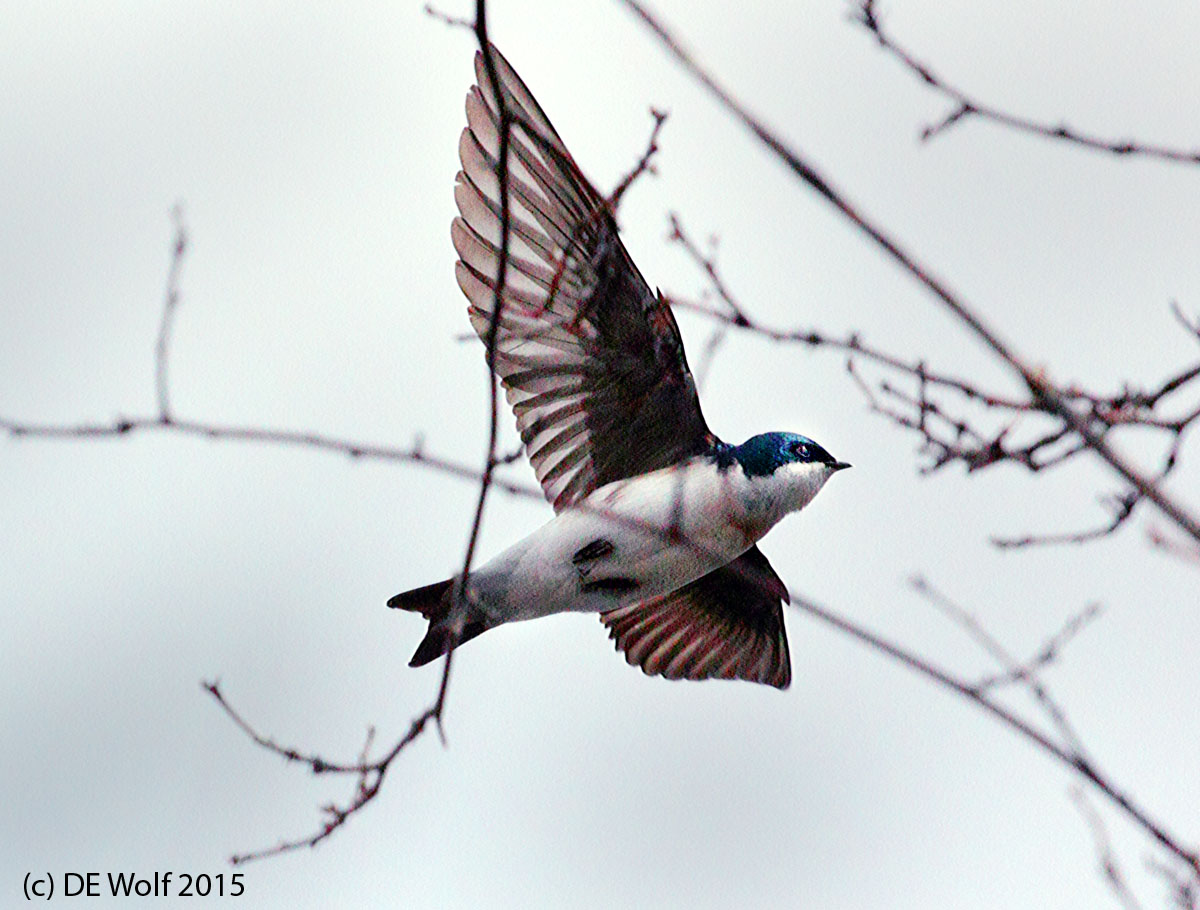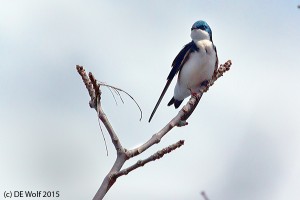
Figure 1 – Tree swalloow at nesting box, Fresh Pond Reserve, Cambridge, MA, April 21, 2015. (c) DE Wolf 2015.
This past week has been truly remarkable on Fresh Pond. Slaves to an ancient schedule, the migratory birds have been returning, species by species. I have seen my first hooded merganser, Lophodytes cucullatus, a lone male out on the pond. On Wednesday (April 21) I was delighted to see tree swallows (Tachycineta bicolor) dive bombing in tremendous haste across the two ponds, and it made me wonder how it would ever be possible to photograph such a graceful but fast bird in flight. A note of natural history – the tree swallow is a long distance commuter. It winters in Mexico, Central America and the Caribbean. It migrates thousand of miles in great flocks to its breeding grounds along the Atlantic coast of North America. Well nature was about to teach me a thing or two about photographing birds. I walked further down the path and was dazzled by the iridescent bird inspecting nesting box Number 5. I was maybe 10 meters away, took out my camera armed with my 70 to 200 mm zoom and started photographing, while I stepped ever closer. The result is Figure 1, and the only problem here was the man-made habitat. It was as if this was the address Number 5, Fresh Pond Lane, in case you wanted to send letters to this finely feathered fellow.
I moved on and a while later noticed that these swallows take rests in the trees. Trees at the edge of the water represent two things I don’t like: invariably because of the protective fencing the distance is too great for even 200 mm, and inevitably you’re shooting into a sky while forced to use positive exposure compensation to be able to get the details on the bird. Still I got Figure 2, which I like because of the pose that the bird is taking – not just sitting there and chirping.
Then it occurred to me that if I waited long enough the swallow would take flight. Now this is a photographic crap shoot. Unlike the instantaneous response of the Leica M3 of my youth, digital SLRs tend to be slow to respond and clunky. There is a long time between shutter press and actual exposure. And many times that I have tried this only the birds tail feathers remain in the image. But this time it worked. I could see immediately on review that he was squarely in the right hand side of the image. The result is Figure 3. I love the beautiful transparency and corrugation of the wings and the way that the feet are pressed up against the bird’s body – landing gear up!

Figure 3 – Tree swallow in flight, Fresh Pond, Reserve, Cambridge, MA, April 21, 2015. (c) DE Wolf 2015.
Figure 1 – Canon T2i with EF70-200mm f/4L USM lens hand-held at 172 mm, ISO 3200, Aperture-Priority AE mode at 1/640th sec at f/9.0 with + 1 exposure compensation.
Figure 2 – Canon T2i with EF70-200mm f/4L USM lens hand-held at 200 mm, ISO 1600, Aperture-Priority AE mode at 1/4000th sec at f/9.0 with no exposure compensation.
Figure 3 – Canon T2i with EF70-200mm f/4L USM lens hand-held at 176 mm, ISO 1600, Aperture-Priority AE mode at 1/4000th sec at f/9.0 with no exposure compensation.

